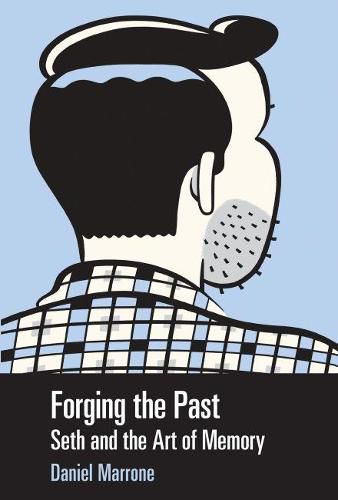Readings Newsletter
Become a Readings Member to make your shopping experience even easier.
Sign in or sign up for free!
You’re not far away from qualifying for FREE standard shipping within Australia
You’ve qualified for FREE standard shipping within Australia
The cart is loading…






This title is printed to order. This book may have been self-published. If so, we cannot guarantee the quality of the content. In the main most books will have gone through the editing process however some may not. We therefore suggest that you be aware of this before ordering this book. If in doubt check either the author or publisher’s details as we are unable to accept any returns unless they are faulty. Please contact us if you have any questions.
At once familiar and hard to place, the work of acclaimed Canadian cartoonist Seth evokes a world that no longer exists-and perhaps never existed, except in the panels of long-forgotten comics. Seth’s distinctive drawing style strikingly recalls a bygone era of cartooning, an apt vehicle for melancholy, gently ironic narratives that depict the grip of the past on the present. Even when he appears to look to the past, however, Seth (born Gregory Gallant) is constantly pushing the medium of comics forward with sophisticated work that often incorporates metafiction, parody, and formal experimentation.
Forging the Past offers a comprehensive account of this work and the complex interventions it makes into the past. Moving beyond common notions of nostalgia, Daniel Marrone explores the various ways in which Seth’s comics induce readers to participate in forging histories and memories. Marrone discusses collecting, Canadian identity, New Yorker cartoons, authenticity, artifice, and ambiguity-all within the context of comics’ unique structure and texture. Seth’s comics are suffused with longing for the past, but on close examination this longing is revealed to be deeply ambivalent, ironic, and self-aware.
Marrone undertakes the most thorough, sustained investigation of Seth’s work to date, while advancing a broader argument about how comics operate as a literary medium. Included as an appendix is a substantial interview, conducted by the author, in which Seth candidly discusses his work, his peers, and his influences.
$9.00 standard shipping within Australia
FREE standard shipping within Australia for orders over $100.00
Express & International shipping calculated at checkout
This title is printed to order. This book may have been self-published. If so, we cannot guarantee the quality of the content. In the main most books will have gone through the editing process however some may not. We therefore suggest that you be aware of this before ordering this book. If in doubt check either the author or publisher’s details as we are unable to accept any returns unless they are faulty. Please contact us if you have any questions.
At once familiar and hard to place, the work of acclaimed Canadian cartoonist Seth evokes a world that no longer exists-and perhaps never existed, except in the panels of long-forgotten comics. Seth’s distinctive drawing style strikingly recalls a bygone era of cartooning, an apt vehicle for melancholy, gently ironic narratives that depict the grip of the past on the present. Even when he appears to look to the past, however, Seth (born Gregory Gallant) is constantly pushing the medium of comics forward with sophisticated work that often incorporates metafiction, parody, and formal experimentation.
Forging the Past offers a comprehensive account of this work and the complex interventions it makes into the past. Moving beyond common notions of nostalgia, Daniel Marrone explores the various ways in which Seth’s comics induce readers to participate in forging histories and memories. Marrone discusses collecting, Canadian identity, New Yorker cartoons, authenticity, artifice, and ambiguity-all within the context of comics’ unique structure and texture. Seth’s comics are suffused with longing for the past, but on close examination this longing is revealed to be deeply ambivalent, ironic, and self-aware.
Marrone undertakes the most thorough, sustained investigation of Seth’s work to date, while advancing a broader argument about how comics operate as a literary medium. Included as an appendix is a substantial interview, conducted by the author, in which Seth candidly discusses his work, his peers, and his influences.